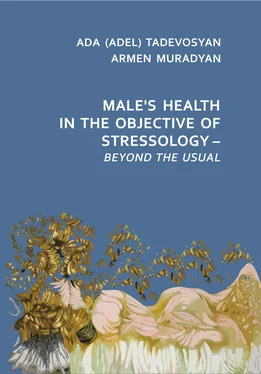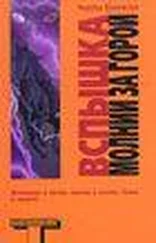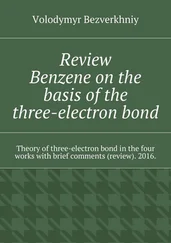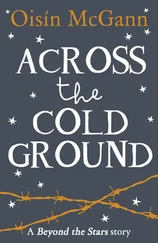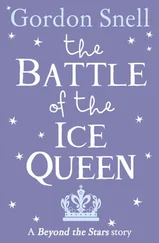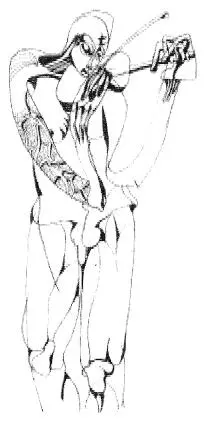
Patient's drawing.
Is it so or not – we will never know.
We will not make any conclusions with respect to a specific example, because we are deeply convinced that it will be another version and nothing more if follow the basic principle of psychology “That might be so, might be otherwise” of which we wrote at the beginning.
But it seemed to us that the example will help understand all of the above said on the individual, his life, motivation, adaptation, objective and subjective realities, psychological defense and the role of suffering in his deeds.
CORRELATION OF CONCEPTS:
“STRESS”, “EMOTIONAL STRESS”,
“TRAUMATIC STRESS” (APES)
Stress. For the first time the word “stress” emerged in the English language in 1303 when the poet R. Manning wrote: “The Lord had sent manna of heaven for the people in great stress”.
In the late eighteenth – early nineteenth centuries Goya, whose art was distinguished by passionate emotional and social orientation, created a series of paintings that he called “Desastress”. The series includes paintings reflecting the human grief and suffering, among them: “Unhappy mother” (Sheet 50 of the famous etchings), “I have seen it” (Sh. 44), “They are a different breed” (Sh. 61), “This is the worst” (Sh. 37).
The concept “stress”, introduced into biology and medicine, is associated with the name of H. Selye and it was used to refer to a non-specific response of the body to any harmful and subsequently a harmless effect too. It is a natural genetically programmed normal and necessary response of the body to provide its survival and development.The essence of Selye’s teaching is his discovery of the three-phase general adaptation syndrome (GAS).
The first phase (stage), called by Selye the “ phase of combat alert ” includes orientation reflex accompanied with restructuring of the whole body. It is mainly implemented by an automatic neurobiological mechanism, by the action of a sympato-parasympatic nervous system BSA and has a bioelectric character.
The second phase is the stage of resistance (strain) ; it is also figuratively referred to as the “stage of fight or flight”. If during the first stage the situation is assessed as dangerous, and anxiety as the expectation of an uncertain danger becomes a “concrete fear”, then through the activation of the endocrine glands the second stage of the stress reaction develops and stress hormones enter the bloodstream. Spread by blood to organ/systems, they put the body into the state of readiness either to flight from danger or to fight with it (muscles tense, heartbeat vigorous, pressure jumps, etc.). Self-preservation mode is triggered throughout the body.
The whole complex is a normal, necessary effect of self-preservation instinct and similar for both types of behavior. The choice of behavior depends on the impulsivity and genetic program; but in human more often on the acquired experience of response in the deadaptation situation. It is stipulated by activation of three endocrine axes. The effects are caused only biochemical or neurobiochemical mechanism, which activates the appropriate organ/systems by hormones.
The third phase is the stage of asthenization . H. Selye has shown that stress accompanies any life activity and corresponds, in certain sense, to the life intensity. It increases with nervous tension, bodily injuries, muscular work, infections, in the situations of joy or sorrow, even with recollection of tragic events of the past and leads to the shift of the internal state of balance to deadaptation.
Let us denote the process of deadaptation – adaptation by one term – stressogenesis . A person in the course of the whole life gets “stress” injections and acquires stress-resistance in the form of behavioral patterns of overcoming stressful state, learns to comprehend and act in a constructive direction. If it does not occur, destructive characteristics of stress trigger. Using the expression: “Stress is the aroma and the taste of life” we should not forget that they are also different as the favorite aroma and taste in different people are different. The classical version of GAS, its evolutionary core, has a discrete nature and represents a unity of three phases. In this embodiment, the GAS came into use as “stress” and became the property of biology.
Revealed opportunities of studying and understanding what is happening in a person for a long time made their way to medicine with difficulty because of the lack of the concept “man in medicine”. Throughout the twentieth century medicine developed as an aid and health improvement of the diseased body, therefore it would not be a mistake to call it “body medicine”. Human health and disease were regarded as structural injuries of different organ/ systems under the impact of various external factors. The role of mental component was reduced to zero or completely ignored in both the questions of etiology, etiopathogenesis of diseases and those of dynamics, therapy and forecast. Psychological principles and laws acting in man, psychosocial component of man were disregarded due to total ignorance of medical sciences – psychology and sociology.
This was promoted by principle of parallelism dominating in neuroscience. Psychiatry should have been exclusion but it was also biologized. The desire of psychiatrists to find a biological substrate in the brain as a cause of schizophrenia, manic-depressive psychosis is still alive, despite the generally accepted by WHO definition of health. According to the Constitution of WHO, “health is a state of complete physical, mental and social well-being and not merely the absence of disease or infirmity”. This definition provokes lots of questions, reprimands and critics and it needs serious correction and specification. But it will be possible only with appearance of the concept “man in medicine”, when the issues of mental health and social well-being are considered from the viewpoint of a triad concept: “man” as a unity of biological, mental and social.
As far back as 1861 I. M. Sechenov suggested that a body without environment supporting its existence is impossible. Man thus is the system with two complex components “body + environment”. Since not only man’s body lives in the world, but rather a personality with the soul lives, acts, suffers and overcomes difficulties of life, this concept of I. M. Sechenov can be expressed using the following formula:
Man =
B (body) + P (personality) + S (soul) + E (environment) and referred to as an
INTEGRITY
Within this integrity, these composites interact with each other via bilateral feedback. Environment, including social medium, affects the body through the data flow of signals in the form of:
• positive – eustressors;
• negative – distressors;
• indifferent.
Among stimulants are identified stimulant signals acting without violating the internal balance. This category of customary signals constitutes the background. An unusual signal of the environment produces an orientation reflex aimed at assessing the environment with regard to the body threat.
If a factor is not threatening, the BEsystem continues functioning in the same mode. If a factor bears a threatening element, anxiety, fear, the deadaptation mechanisms of stressogenesis are triggered introducing the body into the mode of adaptation and it re-adapts. Thus, the factor containing a threat becomes a distressor causing emotional stress.
Читать дальше
